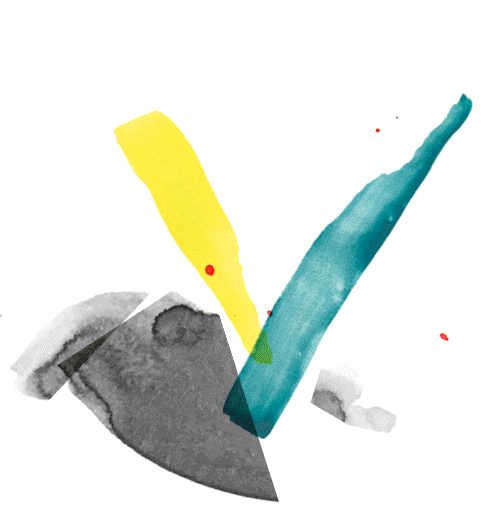

Sign up for our newsletters. You can change the settings or unsubscribe at any time.
Thank you for your subscription. We have sent you an e-mail with a confirmation link.


exp. 1
exp. 2
exp. 3

Käthe Kollwitz
Venue: Gropius Bau
Was also part of: exp. 1
Käthe Kollwitz
Born 1867 in Königsberg (now Kaliningrad, RU) – died 1945 in Moritzburg, DE
An iconic German modernist artist who made drawings, prints, and sculptures, Käthe Kollwitz (1867–1945) distinguished herself in a male-dominated art world by articulating the particular experience of women in the class struggle and during wartime. Her best-known cycles, Ein Weberaufstand [A Weavers’ Revolt, 1893–97] and Bauernkrieg [Peasants’ War, 1902–08], depict popular uprisings that took place during the artist’s lifetime—an acknowledgement of the continued social injustice she observed all around her and a plea for its rectification. Female protagonists figure prominently in both cycles—for example, the Schwarze Hofmännin (Black Anna), a peasant woman credited in historical accounts for inciting revolt in her village of Heilbronn during the German Peasants’ War (1525). Likewise, Die Carmagnole [The Carmagnole, 1901], based on a passage from the Charles Dickens novel A Tale of Two Cities, depicts the revolutionary fervor of a mostly female crowd, while Die Mütter [The Mothers, 1922/23], from the Krieg [War 1918–22/23] series, shows a group of women huddled around their children, their bodies locked in solidarity, forming a sculptural mass, a protective shield.
Kollwitz’s inclusion in this edition of the Berlin Biennale derives from the curatorial team’s research into the Clube dos Artistas Modernos (CAM, Club of Modern Artists), the São Paulo exhibition space founded in 1933 by Flávio de Carvalho. Expressing solidarity with Kollwitz after she was expelled from the Akademie der Künste in 1933 for publicly resisting the Nazis’ rise to power, the CAM organized a retrospective that same year featuring eighty-four prints. In an essay accompanying the exhibition, the seminal Brazilian critic Mário Pedrosa celebrated Kollwitz’s work for engaging with social and political issues rather than merely aesthetic ones. Today, artistic responses such as Kollwitz’s to social injustice and the threat of fascism are as urgent as ever, given the current resurgence of right-wing nationalism across the globe.
Michèle Faguet
Weaving Solidarity
Renata Cervetto and Duygu Örs
Q&A
Hatred Among Us
Lisette Lagnado
Essay
Invitation to the Species: Cecilia Vicuña
Tamaas / Cecilia Vicuña
Podcast
Freiheit für Chile!
Anonymous
Photo album
El primer nueva corónica y buen gobierno
Felipe Guamán Poma de Ayala
Chronicle
Solidarity and Storytelling. Rumors against Enclosure
María Berríos
Essay
By using this website you agree to the use of cookies in accordance with our data privacy policy.

Käthe Kollwitz
Venue: Gropius Bau
Was also part of: exp. 1
Käthe Kollwitz
Born 1867 in Königsberg (now Kaliningrad, RU) – died 1945 in Moritzburg, DE
An iconic German modernist artist who made drawings, prints, and sculptures, Käthe Kollwitz (1867–1945) distinguished herself in a male-dominated art world by articulating the particular experience of women in the class struggle and during wartime. Her best-known cycles, Ein Weberaufstand [A Weavers’ Revolt, 1893–97] and Bauernkrieg [Peasants’ War, 1902–08], depict popular uprisings that took place during the artist’s lifetime—an acknowledgement of the continued social injustice she observed all around her and a plea for its rectification. Female protagonists figure prominently in both cycles—for example, the Schwarze Hofmännin (Black Anna), a peasant woman credited in historical accounts for inciting revolt in her village of Heilbronn during the German Peasants’ War (1525). Likewise, Die Carmagnole [The Carmagnole, 1901], based on a passage from the Charles Dickens novel A Tale of Two Cities, depicts the revolutionary fervor of a mostly female crowd, while Die Mütter [The Mothers, 1922/23], from the Krieg [War 1918–22/23] series, shows a group of women huddled around their children, their bodies locked in solidarity, forming a sculptural mass, a protective shield.
Kollwitz’s inclusion in this edition of the Berlin Biennale derives from the curatorial team’s research into the Clube dos Artistas Modernos (CAM, Club of Modern Artists), the São Paulo exhibition space founded in 1933 by Flávio de Carvalho. Expressing solidarity with Kollwitz after she was expelled from the Akademie der Künste in 1933 for publicly resisting the Nazis’ rise to power, the CAM organized a retrospective that same year featuring eighty-four prints. In an essay accompanying the exhibition, the seminal Brazilian critic Mário Pedrosa celebrated Kollwitz’s work for engaging with social and political issues rather than merely aesthetic ones. Today, artistic responses such as Kollwitz’s to social injustice and the threat of fascism are as urgent as ever, given the current resurgence of right-wing nationalism across the globe.
Michèle Faguet
#fight4rojava
Graffiti
Museo de la Solidaridad Salvador Allende (MSSA) in Berlin
A conversation between María Berríos and Melanie Roumiguière
Conversation
Invitation to the Species: Cecilia Vicuña
Tamaas / Cecilia Vicuña
Podcast
St Sara Kali George
Delaine Le Bas
Soundscape
Hatred Among Us
Lisette Lagnado
Essay
Género y colonialidad en busca de claves de lectura y de un vocabulario estratégico descolonial
Rita Segato
Essay
By using this website you agree to the use of cookies in accordance with our data privacy policy.

Käthe Kollwitz
Venue: Gropius Bau
Was also part of: exp. 1
Käthe Kollwitz
Born 1867 in Königsberg (now Kaliningrad, RU) – died 1945 in Moritzburg, DE
An iconic German modernist artist who made drawings, prints, and sculptures, Käthe Kollwitz (1867–1945) distinguished herself in a male-dominated art world by articulating the particular experience of women in the class struggle and during wartime. Her best-known cycles, Ein Weberaufstand [A Weavers’ Revolt, 1893–97] and Bauernkrieg [Peasants’ War, 1902–08], depict popular uprisings that took place during the artist’s lifetime—an acknowledgement of the continued social injustice she observed all around her and a plea for its rectification. Female protagonists figure prominently in both cycles—for example, the Schwarze Hofmännin (Black Anna), a peasant woman credited in historical accounts for inciting revolt in her village of Heilbronn during the German Peasants’ War (1525). Likewise, Die Carmagnole [The Carmagnole, 1901], based on a passage from the Charles Dickens novel A Tale of Two Cities, depicts the revolutionary fervor of a mostly female crowd, while Die Mütter [The Mothers, 1922/23], from the Krieg [War 1918–22/23] series, shows a group of women huddled around their children, their bodies locked in solidarity, forming a sculptural mass, a protective shield.
Kollwitz’s inclusion in this edition of the Berlin Biennale derives from the curatorial team’s research into the Clube dos Artistas Modernos (CAM, Club of Modern Artists), the São Paulo exhibition space founded in 1933 by Flávio de Carvalho. Expressing solidarity with Kollwitz after she was expelled from the Akademie der Künste in 1933 for publicly resisting the Nazis’ rise to power, the CAM organized a retrospective that same year featuring eighty-four prints. In an essay accompanying the exhibition, the seminal Brazilian critic Mário Pedrosa celebrated Kollwitz’s work for engaging with social and political issues rather than merely aesthetic ones. Today, artistic responses such as Kollwitz’s to social injustice and the threat of fascism are as urgent as ever, given the current resurgence of right-wing nationalism across the globe.
Michèle Faguet
Glossary of Common Knowledge
L’Internationale Online
Glossary
Undocumented Rumours and Disappearing Acts from Chile
María Berríos
Essay
El primer nueva corónica y buen gobierno
Felipe Guamán Poma de Ayala
Chronicle
St Sara Kali George
Delaine Le Bas
Soundscape
Género y colonialidad en busca de claves de lectura y de un vocabulario estratégico descolonial
Rita Segato
Essay
Being in Crisis together – Einander in Krisen begegnen
Feminist Health Care Research Group (Inga Zimprich/Julia Bonn)
Online workshop
By using this website you agree to the use of cookies in accordance with our data privacy policy.

Käthe Kollwitz
Venue: Gropius Bau
Was also part of: exp. 1
Käthe Kollwitz
Born 1867 in Königsberg (now Kaliningrad, RU) – died 1945 in Moritzburg, DE
An iconic German modernist artist who made drawings, prints, and sculptures, Käthe Kollwitz (1867–1945) distinguished herself in a male-dominated art world by articulating the particular experience of women in the class struggle and during wartime. Her best-known cycles, Ein Weberaufstand [A Weavers’ Revolt, 1893–97] and Bauernkrieg [Peasants’ War, 1902–08], depict popular uprisings that took place during the artist’s lifetime—an acknowledgement of the continued social injustice she observed all around her and a plea for its rectification. Female protagonists figure prominently in both cycles—for example, the Schwarze Hofmännin (Black Anna), a peasant woman credited in historical accounts for inciting revolt in her village of Heilbronn during the German Peasants’ War (1525). Likewise, Die Carmagnole [The Carmagnole, 1901], based on a passage from the Charles Dickens novel A Tale of Two Cities, depicts the revolutionary fervor of a mostly female crowd, while Die Mütter [The Mothers, 1922/23], from the Krieg [War 1918–22/23] series, shows a group of women huddled around their children, their bodies locked in solidarity, forming a sculptural mass, a protective shield.
Kollwitz’s inclusion in this edition of the Berlin Biennale derives from the curatorial team’s research into the Clube dos Artistas Modernos (CAM, Club of Modern Artists), the São Paulo exhibition space founded in 1933 by Flávio de Carvalho. Expressing solidarity with Kollwitz after she was expelled from the Akademie der Künste in 1933 for publicly resisting the Nazis’ rise to power, the CAM organized a retrospective that same year featuring eighty-four prints. In an essay accompanying the exhibition, the seminal Brazilian critic Mário Pedrosa celebrated Kollwitz’s work for engaging with social and political issues rather than merely aesthetic ones. Today, artistic responses such as Kollwitz’s to social injustice and the threat of fascism are as urgent as ever, given the current resurgence of right-wing nationalism across the globe.
Michèle Faguet
Glossary of Common Knowledge
L’Internationale Online
Glossary
THE MOBILIZATION
Nicolás Cuello
Text
Being in Crisis together – Einander in Krisen begegnen
Feminist Health Care Research Group (Inga Zimprich/Julia Bonn)
Online workshop
Grupo Experimental de Cine en acción
Gabriel Peluffo
Drawing
Queer Ancient Ways: A Decolonial Exploration
Zairong Xiang
Monograph
Hatred Among Us
Lisette Lagnado
Essay
By using this website you agree to the use of cookies in accordance with our data privacy policy.
By using this website you agree to the use of cookies in accordance with our data privacy policy.




